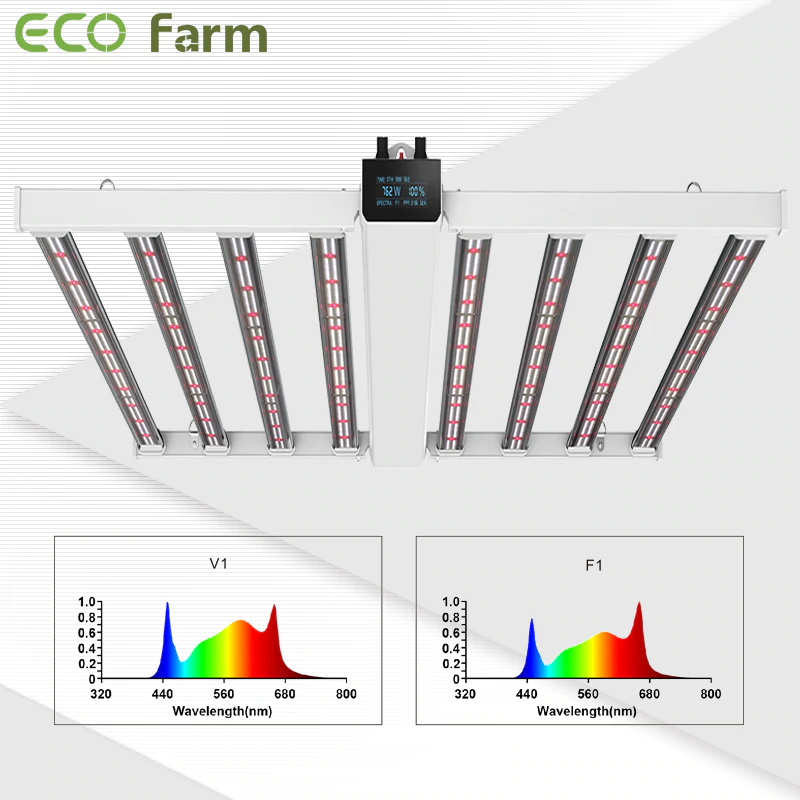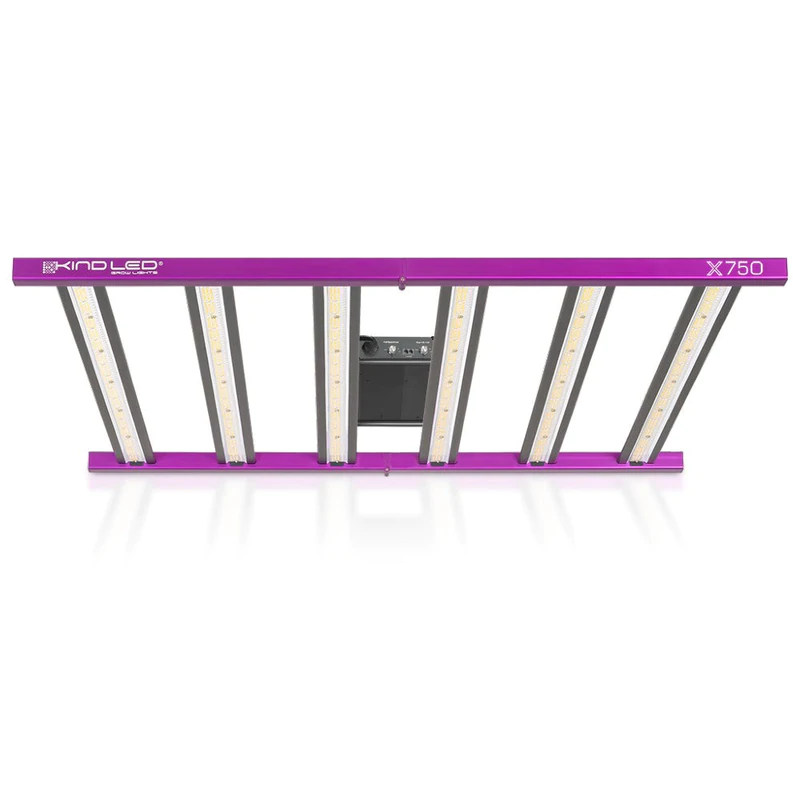- Home
- SHOP ECO FARM
-
TOP BRANDS
-
Grow Lights Brands
- Adjust-A-Wing
- Apollo Horticulture
- Bestva
- Black Dog LED
- California Lightworks
- ChilLED Grow Light
- Eco Farm
- HLG - Horticulture Lighting Group
- Kingled
- Kind LED
- Mars Hydro
- Morsen
- Neilo
- NextLight
- Phlizon
- PlatinumLed
- Roleadro
- Optic LED Grow Lights
- ViparSpectra
- Vivosun
- EYE Hortilux
- IPOWER
- NanoLux
- Phantom grow light
- Gavita grow lights
- Grower's Choice
- Lumatek
- Maxibright
- Yearld Pro
- ThinkGrow
- Crecer Lighting
- Green Sunshine Electric Sky
- fohse aries
- loriflux
- luxx
- fluence
- iluminar
- Lex
- LTC
- Rayonled
- FGI
- PHOTONTEK
- Grow Tents & Kits Brands
- Extraction & Harvest Brands
- Climate Control & Hydroponic Brands
-
Grow Lights Brands
- COMPANY INFO
- COOPERATE WITH US
- Blog
- Sign in
- Home
-
SHOP ECO FARM
- ECO Farm Grow Lights
- ECO Farm LED Grow Lights
- ECO Farm Quantum Board
- ECO Farm Samsung LED Grow Lights
- ECO Farm COB Grow Lights
- ECO Farm Commercial Lights
- ECO Farm Supplemental Grow Light
- ECO Farm Fluorescent grow lights
- ECO Farm HPS & MH Grow Lights
- ECO Farm CMH Grow Lights
- ECO Farm HID/CMH Bulbs & Ballasts
- ECO Farm Grow Tents & Kits
- ECO Farm 2x2ft Grow Kits
- ECO Farm 3x3ft Grow Kits
- ECO Farm 3.3x3.3ft Grow Kits
- ECO Farm 4x4ft Grow Kits
- ECO Farm 5x5ft Grow Kits
- ECO Farm Grow Tent - Standard Style
- ECO Farm Grow Tent - Extension & Roof & Lodge Style
- ECO Farm Extraction & Harvest
- ECO Farm Rosin Press Machine
- ECO Farm Dry & Wet Trimmers
- ECO Farm Oil Accessories
- ECO Farm Medicinal Plants Grinder
- ECO Farm Medicinal Plants Containers
- ECO Farm Medicinal Plants Dryer
- ECO Farm Refrigeration Dryer
- ECO Farm Climate Control & Other Accessories
- ECO Farm Inline Duct Fans
- ECO Farm Oscillating Fans
- ECO Farm Exhaust Fans
- ECO Farm Air Filter
- ECO Farm Duct Muffler
- ECO Farm Ventilation Kits
- ECO Farm Plant Humidifiers
- ECO Farm Plant Dehumidifiers
- ECO Farm Hydroponic Accessories
- ECO Farm Other Accessories
- ECO Farm Hydroponics Microscopes
-
TOP BRANDS
- Grow Lights Brands
- Adjust-A-Wing
- Apollo Horticulture
- Bestva
- Black Dog LED
- California Lightworks
- ChilLED Grow Light
- Eco Farm
- HLG - Horticulture Lighting Group
- Kingled
- Kind LED
- Mars Hydro
- Morsen
- Neilo
- NextLight
- Phlizon
- PlatinumLed
- Roleadro
- Optic LED Grow Lights
- ViparSpectra
- Vivosun
- EYE Hortilux
- IPOWER
- NanoLux
- Phantom grow light
- Gavita grow lights
- Grower's Choice
- Lumatek
- Maxibright
- Yearld Pro
- ThinkGrow
- Crecer Lighting
- Green Sunshine Electric Sky
- fohse aries
- loriflux
- luxx
- fluence
- iluminar
- Lex
- LTC
- Rayonled
- FGI
- PHOTONTEK
- Grow Tents & Kits Brands
- Apollo Horticulture
- Black Box
- CoolGrows
- Eco Farm
- GrowLab
- Gorilla Grow Tents
- Mars Hydro
- Quictent
- Secret Jardin
- Unit Farm
- TopoGrow
- VIVOSUN
- Topolite
-
COMPANY INFO
-
COOPERATE WITH US
- Blog
ECO Farm MB3 Pro 760W LM301B LED Grow Light VS Kind LED X750 Grow Light
March 02, 2022
Are you in the market for a new LED grow light? If so, you’re likely wondering what the best option is for your needs. Not all LED grow lights are created equal, and it can be tough to determine which one is right for you.
In this blog post, we’ll take a look at some of the best LED grow lights available. We’ll also provide a buyer’s guide to help you choose the right light for your garden. Read on to learn more!
How do LED lights actually work?
The light in conventional high-pressure sodium lamps is created when sodium and other elements enclosed in a glass tube are heated with an electric discharge. LED (Light Emitting Diode) technology produces light by passing an electric current through a semiconducting material, which consequently releases photons (light) based on the principle of the so-called electroluminescence. This means that the electrical resistance of the semiconductor filament causes it to heat up and glow with a bright light.
Sodium lamps have been widely used since the mid-20th century and they are predominantly considered a very efficient way of illuminating large spaces. They are installed, for example, in street lights, however they are not an ideal solution in grow-ops. LED grow lights outperform them when it comes to energy efficiency, durability, and they provide optimal light spectrum while also being much easier to handle.
ECO Farm MB3 Pro 760W LM301B LED Grow Light

Features:
This ECO Farm LED grow light is designed with 8 strips for a more even and complete canopy coverage. Equipped with high efficiency Samsung LM301B diode with extremely low thermal resistance. The plant light is flicker-free and dim, with a lifespan of 50,000 hours. The LED grow light consumes 720 watts at 2128 µmol/s and achieves a satisfactory PPE of 2.8 µmol/J covering high yield full cycle growth of 5'x5'. Each full spectrum LED grow light uses 2880 SAMSUNG LM301B diodes + 80 OSRAM 660nm. The abundance of wavelength types is consistent with the spectral range of plant photosynthesis. It can concentrate specific wavelengths of light, illuminate crops evenly, and control plant height and plant nutrients. Accelerates the synthesis of plant carbohydrates and vitamins and shortens the growth cycle. The indoor plant LED grow light adopts advanced heat dissipation aluminum material and waterproof design. High-quality components ensure that the product works better during its life cycle. At the same time, it can also make planting in the tent more secure and comfortable.

Features:
Kind LED grow light uses top-of-the-line Osram and Phillips diodes to produce targeted full-spectrum light as well as UV and IR to enhance your plants during flowering. The KIND X750 uses the full spectrum white LED diodes used by top LED companies. Kind’s Targeted Full Spectrum is designed for plants to maximize harvest weight and plant quality. Our spectrum is the result of hundreds of thousands of hours of field testing in the Northern California medicinal plant industry. With 750 watts of power and a 4' x 4' footprint, the X750 is powerful enough for commercial growers while still being compact enough for single planting.
Why You Should Choose the LED Grow Lights?
LED lights save power
The most common reason growers (literally) switch to LED lights is to save electricity, the money they invest in their growing business. All equipment in any grow room should be as energy efficient as possible. That means it should do as much work as possible with as little power as possible. This is where the new LED grow lights excel.
The efficiency of HPS lamps ranges from 1.7 to 1.85 µmol/J. High-quality LED grow lights can reach almost 3 µmol/J. So you can replace a 1000 watt HPS light with about 600 watt LEDs and still end up getting the same or even greater gain.
Our recommendation: When growing in very strong light (PPFD above 1000 µmol/s), it is recommended to add carbon dioxide to the air in the growth chamber to allow plants to efficiently utilize all available light energy.
Lower temperature and longer shelf life
LED grow lights generate far less heat than traditional high pressure or fluorescent lamps. There is less risk of fire or burning or overheating plants when using them. What’s more, you can also save money on your grow room ventilation system because you don’t have to ventilate the grow area as often as you would with traditional lights. Another advantage we should mention: there is less temperature difference between day and night in the growth chamber. This is usually good news for your plants.
The lower temperature of LED lights also means that their lifespan is often several times longer. State-of-the-art high-pressure lamps only last about 10,000 hours and gradually lose efficiency. The new LED lights have an expected lifespan of around 50,000 hours with negligible loss of efficiency, and they are considered so reliable that even some manufacturers offer warranties of up to five years.
Ideal color spectrum and light intensity
One of the biggest advantages of LED grow lights is the wide spectrum they offer. If you choose them, you don’t have to worry about switching the light source every time from growing to flowering and vice versa, as is the case with high-pressure discharge lamps.
With the help of diodes, manufacturers of LED lamps are able to produce any spectrum. Mostly, they choose broad-spectrum “white” light that ideally mimics sunlight. In such light, plants develop more naturally and are not stressed when the color of the light changes rapidly.
Plants don’t grow well in low light, and too much light can damage or even burn them. Young plants need less light, and their needs increase as they mature. In the past, most growers solved this problem by constantly adjusting the height of the lights. LED lights from leading manufacturers can be dimmed with just the turn of a knob.
Less equipment and more space
Traditional grow lights always consist of a ballast, a lampshade with a socket, a lamp and several meters of wire. On the other hand, LED modules are compact and take up only a fraction of your growing area. As a result, it is easier to move the light around the grow room for better coverage of the entire growing area. When using oval lights, growers must use shades that reflect some of the light back to the plants. And LED modules are designed to provide precise lighting for a given space.
Conclusion
If you want the best LED grow lights for indoor plants they won’t come cheap.
If you’re thrown off by the higher price of getting LED grow light for your plants, LEDs might not be the best answer. You’re better off using a 600 watt or 1000 watt HPS/MH grow light which costs less.
Also in Indoor Grow LED Grow Light
HLG Greenhouse Pro HE HV 630W LED Grow Light VS Geeklight grow light 480W hydroponic led grow light
October 20, 2023
